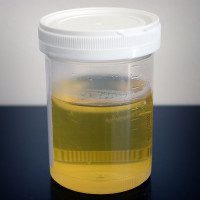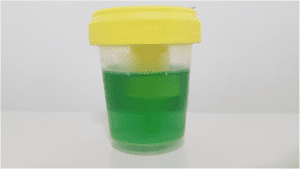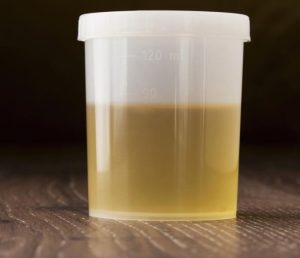A lot of people have no idea what color their urine should be. But if you’re not sure, here’s some basic knowledge you should know about urinalysis. Urine analysis detects diseases or conditions such as kidney stones, diabetes, cancer, and more. Find out why they’re so important!
Urine’s color can change depending on a variety of events, including food and drugs.

Most healthy people’s urine will often range between numerous shades of yellow, from pale yellow to dark amber. Urine colorless or “clear” is also normal and shows a person is well hydrated.
However, there are several situations where the color of urine should be addressed. While some of these changes are easily addressed, others may suggest a more serious condition.
Here’s an explanation of what varied urine colors might indicate for your health.
1. Is Clear Urine/Transparent Good for You?
Clear urine is frequently suggestive of enough hydration and general health. Clear urine suggests that you are getting enough water and fluids each day, which is about 3,000 mL for men and 2,200 mL for women. When testing your urine, this is one of the best colors you can hope for.
If your urine is generally clear, this might signal that you drink too much water. Excessive water drinking can deplete electrolytes in the body, causing nausea, headaches, and muscle cramps.
Furthermore, having clear pee even while not consuming a lot of water might be a sign of viral hepatitis or cirrhosis.
If you notice this change, you should see a doctor as soon as possible. So in all honesty, drink water in moderation to keep your pee clean and healthy. but be sure to have the average quantity daily recommended above.
2. Is Yellow Urine Color Okay?

The urine of most healthy persons will range between light yellow or dark amber in shade.
The yellowish color of urine is created by urochrome, a pigment produced by the body when hemoglobin is broken down. Hemoglobin is found in red blood cells and helps to transport oxygen throughout the body.
Old hemoglobin cells break down into urochrome as they die. This pigment then finds its way into the urine, giving it a yellow hue.
The color of your urine might reveal information about your body’s urochrome concentration. The deeper the yellow, the more urochrome there is in the urine sample. If your urine is pale yellow, it indicates that you have a lot of water in your system.
- If you have dark yellow pee, you should drink more water to avoid dehydration. The intense yellow color is typically a warning indication that you aren’t drinking enough fluids or that you are removing water from your body in other ways. For example, sweating.
- Furthermore, bright yellow urine may suggest an excess of B-2 and B-12 in the body. While it may appear to be concerning, if you are taking supplements, this is harmless.
3. Is Green Urine Color Abnormal?

Green urine is not a natural color. In certain cases, the color change is induced by a chemical reaction with medications that include blue pigments.
Among these medications are:
- Promethazine
- Cimetidine
- Indomethacin
- Propofol
- Methylene blue
- Metoclopramide
- Amitriptyline
Things that cause green urine color include;
- Food coloring can cause this color change.
- Excess bilirubin in the body can cause green urine coloration and is an indication of liver problems.
- A very unusual Urinary Tract Infection (UTI) caused by the bacterium Pseudomonas aeruginosa can also cause green color.
If you’re taking any of the aforementioned medicines and have green color urine, it’s usually nothing to worry about because the color will fade after a few trips down the toilet. However, it is important to see a doctor to rule out any potential health hazards.
4. Is Orange Color Good?
Orange urine can indicate one of four things about your overall health:
- You are dehydrated. Urine may have a deeper orange color when there is less water in your body.
- You have jaundice or other liver problems. Bile may be entering your system and causing orange urine as a result of liver disorders.
- Your medication is causing side effects. Chemotherapy drugs, sulfasalazine, and phenazopyridine can cause orange urine.
- You ate some carrots. A high intake of carrots and vitamin C may result in bright orange urine.
5. Is Red Color Normal?
Blood in the urine, also known as hematuria, can be a sign of a urinary tract infection, cancer, or kidney stones if it is reddish in color.
However, red urine can appear in a variety of non-serious circumstances.
- Consuming an excessive amount of a certain food, such as beets or blueberries, is one example.
- Some medications, such as rifampin, phenazopyridine, and senna, may cause transient urine coloring.
If you have red urine color, you should consult a doctor to rule out any possible health problems.
6. Is it usual to have cloudy urine?

Cloudy urine color may suggest an infection, such as a urinary tract infection, or other urinary tract problems. Dehydration, as well as renal and chronic diseases, can all result in cloudy urine.
Pneumaturia is a disorder that causes the urine to be hazy and foamy. If not treated properly, this problem can worsen, rupturing the bladder and spreading infection.
If your urine is consistently hazy, you should contact a doctor for further testing.
7. Dark Brown Urine Color
Brownish urine might be the result of liver problems or porphyria, a rare condition in which the body produces an excessively large quantity of porphyrin.
Other factors that might be causing it are:
- Temporary brownish urine can be due to metronidazole, chloroquine, nitrofurantoin, methocarbamol, and cascara.
- Foods that are excellent for your heart and mind, such as fava beans, rhubarb, and aloe, might cause urine to be dark brown.
- Exertional hematuria can occur as a result of long-distance running. This is usually harmless and goes away after 24 to 48 hours of relaxation.
Several factors can affect or make your urine look different but from the above explanations, you can easily identify healthy urine color from an abnormal situation before seeing your doctor.

